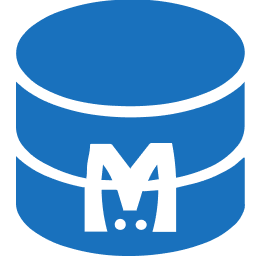You are looking at the documentation of a prior release. To read the documentation of the latest release, please
visit here.
New to KubeDB? Please start here.
Running Redis
This tutorial will show you how to use KubeDB to run an Redis database.
Before You Begin
At first, you need to have a Kubernetes cluster, and the kubectl command-line tool must be configured to communicate with your cluster. If you do not already have a cluster, you can create one by using Minikube.
Now, install KubeDB cli on your workstation and KubeDB operator in your cluster following the steps here.
To keep things isolated, this tutorial uses a separate namespace called demo throughout this tutorial. Run the following command to prepare your cluster for this tutorial:
$ kubectl create -f ./docs/examples/redis/demo-0.yaml
namespace "demo" created
$ kubectl get ns
NAME STATUS AGE
default Active 23h
demo Active 35s
kube-public Active 23h
kube-system Active 23h
Create an Redis database
KubeDB implements a Redis CRD to define the specification of an Redis database. Below is the Redis object created in this tutorial.
apiVersion: kubedb.com/v1alpha1
kind: Redis
metadata:
name: r1
namespace: demo
spec:
version: 4
doNotPause: true
storage:
storageClassName: "standard"
accessModes:
- ReadWriteOnce
resources:
requests:
storage: 50Mi
$ kubedb create -f ./docs/examples/redis/demo-1.yaml
validating "./docs/examples/redis/demo-1.yaml"
redis "r1" created
Here,
spec.versionis the version of Redis database. In this tutorial, an Redis 4 database is going to be created.spec.doNotPausetells KubeDB operator that if this object is deleted, it should be automatically reverted. This should be set to true for production databases to avoid accidental deletion.spec.storagespecifies the StorageClass of PVC dynamically allocated to store data for this database. This storage spec will be passed to the StatefulSet created by KubeDB operator to run database pods. You can specify any StorageClass available in your cluster with appropriate resource requests. If no storage spec is given, anemptyDiris used.
KubeDB operator watches for Redis objects using Kubernetes api. When a Redis object is created, KubeDB operator will create a new StatefulSet and a ClusterIP Service with the matching Redis object name. KubeDB operator will also create a governing service for StatefulSets with the name kubedb, if one is not already present. If RBAC is enabled, a ClusterRole, ServiceAccount and ClusterRoleBinding with the matching object name will be created and used as the service account name for the corresponding StatefulSet.
$ kubedb describe rd r1 -n demo
Name: r1
Namespace: demo
StartTimestamp: Tue, 12 Dec 2017 12:02:05 +0600
Status: Running
Volume:
StorageClass: standard
Capacity: 50Mi
Access Modes: RWO
StatefulSet:
Name: r1
Replicas: 1 current / 1 desired
CreationTimestamp: Tue, 12 Dec 2017 12:02:15 +0600
Pods Status: 1 Running / 0 Waiting / 0 Succeeded / 0 Failed
Service:
Name: r1
Type: ClusterIP
IP: 10.102.1.255
Port: db 6379/TCP
Events:
FirstSeen LastSeen Count From Type Reason Message
--------- -------- ----- ---- -------- ------ -------
2m 2m 1 Redis operator Normal SuccessfulCreate Successfully created StatefulSet
2m 2m 1 Redis operator Normal SuccessfulCreate Successfully created Redis
2m 2m 1 Redis operator Normal SuccessfulValidate Successfully validate Redis
2m 2m 1 Redis operator Normal Creating Creating Kubernetes objects
$ kubectl get statefulset -n demo
NAME DESIRED CURRENT AGE
r1 1 1 3m
$ kubectl get pvc -n demo
NAME STATUS VOLUME CAPACITY ACCESS MODES STORAGECLASS AGE
data-r1-0 Bound pvc-0117d2e5-df02-11e7-9e8f-0800279fc284 50Mi RWO standard 3m
$ kubectl get pv -n demo
NAME CAPACITY ACCESS MODES RECLAIM POLICY STATUS CLAIM STORAGECLASS REASON AGE
pvc-0117d2e5-df02-11e7-9e8f-0800279fc284 50Mi RWO Delete Bound demo/data-r1-0 standard 3m
$ kubectl get service -n demo
NAME TYPE CLUSTER-IP EXTERNAL-IP PORT(S) AGE
kubedb ClusterIP None <none> <none> 4m
r1 ClusterIP 10.102.1.255 <none> 6379/TCP 4m
KubeDB operator sets the status.phase to Running once the database is successfully created. Run the following command to see the modified Redis object:
$ kubedb get rd -n demo r1 -o yaml
apiVersion: kubedb.com/v1alpha1
kind: Redis
metadata:
clusterName: ""
creationTimestamp: 2017-12-12T06:02:05Z
deletionGracePeriodSeconds: null
deletionTimestamp: null
generation: 0
initializers: null
name: r1
namespace: demo
resourceVersion: "24131"
selfLink: /apis/kubedb.com/v1alpha1/namespaces/demo/redises/r1
uid: fb09548e-df01-11e7-9e8f-0800279fc284
spec:
doNotPause: true
storage:
accessModes:
- ReadWriteOnce
resources:
requests:
storage: 50Mi
storageClassName: standard
version: 4
status:
creationTime: 2017-12-12T06:02:05Z
phase: Running
Now, you can connect to this database through redis-cli. In this tutorial, we are connecting to the Redis server from inside of pod.
$ kubectl exec -it r1-0 -n demo sh
> redis-cli
127.0.0.1:6379> ping
PONG
#save data
127.0.0.1:6379> SET mykey "Hello"
OK
# view data
127.0.0.1:6379> GET mykey
"Hello"
127.0.0.1:6379> exit
Pause Database
Since the Redis object created in this tutorial has spec.doNotPause set to true, if you delete the Redis object, KubeDB operator will recreate the object and essentially nullify the delete operation. You can see this below:
$ kubedb delete rd r1 -n demo
error: Redis "r1" can't be paused. To continue delete, unset spec.doNotPause and retry.
Now, run kubedb edit rd r1 -n demo to set spec.doNotPause to false or remove this field (which default to false). Then if you delete the Redis object, KubeDB operator will delete the StatefulSet and its pods, but leaves the PVCs unchanged. In KubeDB parlance, we say that r1 Redis database has entered into dormant state. This is represented by KubeDB operator by creating a matching DormantDatabase object.
$ kubedb delete rd -n demo r1
redis "r1" deleted
$ kubedb get drmn -n demo r1
NAME STATUS AGE
r1 Pausing 9s
$ kubedb get drmn -n demo r1
NAME STATUS AGE
r1 Paused 50s
$ kubedb get drmn -n demo r1 -o yaml
apiVersion: kubedb.com/v1alpha1
kind: DormantDatabase
metadata:
clusterName: ""
creationTimestamp: 2017-12-12T06:20:46Z
deletionGracePeriodSeconds: null
deletionTimestamp: null
generation: 0
initializers: null
labels:
kubedb.com/kind: Redis
name: r1
namespace: demo
resourceVersion: "25424"
selfLink: /apis/kubedb.com/v1alpha1/namespaces/demo/dormantdatabases/r1
uid: 96f5512b-df04-11e7-9e8f-0800279fc284
spec:
origin:
metadata:
creationTimestamp: null
name: r1
namespace: demo
spec:
redis:
resources: {}
storage:
accessModes:
- ReadWriteOnce
resources:
requests:
storage: 50Mi
storageClassName: standard
version: "4"
status:
creationTime: 2017-12-12T06:20:46Z
pausingTime: 2017-12-12T06:21:36Z
phase: Paused
Here,
spec.originis the spec of the original spec of the original Redis object.status.phasepoints to the current database statePaused.
Resume Dormant Database
To resume the database from the dormant state, set spec.resume to true in the DormantDatabase object.
$ kubedb edit drmn -n demo r1
apiVersion: kubedb.com/v1alpha1
kind: DormantDatabase
metadata:
clusterName: ""
creationTimestamp: 2017-12-12T06:20:46Z
deletionGracePeriodSeconds: null
deletionTimestamp: null
generation: 0
initializers: null
labels:
kubedb.com/kind: Redis
name: r1
namespace: demo
resourceVersion: "25424"
selfLink: /apis/kubedb.com/v1alpha1/namespaces/demo/dormantdatabases/r1
uid: 96f5512b-df04-11e7-9e8f-0800279fc284
spec:
resume: true
origin:
metadata:
creationTimestamp: null
name: r1
namespace: demo
spec:
redis:
resources: {}
storage:
accessModes:
- ReadWriteOnce
resources:
requests:
storage: 50Mi
storageClassName: standard
version: "4"
status:
creationTime: 2017-12-12T06:20:46Z
pausingTime: 2017-12-12T06:21:36Z
phase: Paused
KubeDB operator will notice that spec.resume is set to true. KubeDB operator will delete the DormantDatabase object and create a new Redis object using the original spec. This will in turn start a new StatefulSet which will mount the originally created PVCs. Thus the original database is resumed.
Wipeout Dormant Database
You can also wipe out a DormantDatabase by setting spec.wipeOut to true. KubeDB operator will delete the PVCs once the spec.wipeOut is set to true. There is no way to resume a wiped out database. So, be sure before you wipe out a database.
$ kubedb edit drmn -n demo r1
# set spec.wipeOut: true
$ kubedb get drmn -n demo r1 -o yaml
apiVersion: kubedb.com/v1alpha1
kind: DormantDatabase
metadata:
clusterName: ""
creationTimestamp: 2017-12-12T06:25:29Z
generation: 0
initializers: null
labels:
kubedb.com/kind: Redis
name: r1
namespace: demo
resourceVersion: "25827"
selfLink: /apis/kubedb.com/v1alpha1/namespaces/demo/dormantdatabases/r1
uid: 3f71dac4-df05-11e7-9e8f-0800279fc284
spec:
origin:
metadata:
creationTimestamp: null
name: r1
namespace: demo
spec:
redis:
resources: {}
storage:
accessModes:
- ReadWriteOnce
resources:
requests:
storage: 50Mi
storageClassName: standard
version: "4"
wipeOut: true
status:
creationTime: 2017-12-12T06:25:29Z
pausingTime: 2017-12-12T06:26:39Z
phase: WipedOut
wipeOutTime: 2017-12-12T06:26:39Z
$ kubedb get drmn -n demo
NAME STATUS AGE
r1 WipedOut 1m
Delete Dormant Database
You still have a record that there used to be an Redis database r1 in the form of a DormantDatabase database r1. Since you have already wiped out the database, you can delete the DormantDatabase object.
$ kubedb delete drmn r1 -n demo
dormantdatabase "r1" deleted
Cleaning up
To cleanup the Kubernetes resources created by this tutorial, run:
$ kubectl delete ns demo
If you would like to uninstall KubeDB operator, please follow the steps here.
Next Steps
- Learn about the details of Redis object here.
- Thinking about monitoring your database? KubeDB works out-of-the-box with Prometheus.
- Learn how to use KubeDB in a RBAC enabled cluster.
- Wondering what features are coming next? Please visit here.
- Want to hack on KubeDB? Check our contribution guidelines.



































